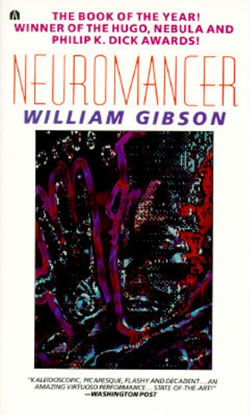
In another occurrence of terrible people weaponizing the internet, a number of assholes posted strobing images to Twitter with the intent of inducing seizures in people with the photosensitive variety of epilepsy. In order to ensure that their intended victims viewed the images, they @-mentioned the Epilepsy Foundation’s Twitter username and included epilepsy-related hashtags in their tweets. Worse still, they did this in November — National Epilepsy Awareness Month — when a larger than usual number of people would be following the Epilepsy Foundation’s Twitter account.
This isn’t the first time that someone has tried this sort of attack against a person with epilepsy. In December of 2016, John Rayne Rivello, who didn’t agree with journalist Kurt Eichenwald’s negative takes on Donald Trump, tweeted a seizure-inducing animated GIF to Eichenwald from an account named @jew-goldstein. The GIF included the text “YOU DESERVE A SEIZURE FOR YOUR POSTS”.
Eichenwald viewed the tweet, as suffered a seizure, as was Rivello’s intent. As written up in The Outline:
According to a federal civil suit filed by Eichenwald against Rivello in Maryland, that seizure left him vulnerable to additional ones; he had another a week later. The second one forced him to increase the dosage of his anti-convulsive medication, despite profoundly debilitating side effects, and he spent Christmas of 2016 in a sedated haze.
Unsurprisingly, Rivello’s defense in the suit is based on the First Amendment, but as the Outline article says in a pull quote:
PUNCHING SOMEONE IN THE FACE COMMUNICATES A MESSAGE, BUT IT ISN’T ONE PROTECTED BY THE FIRST AMENDMENT.
The proceeding has been delayed until January 31, and Rivello is expected to plead guilty.
William Gibson wrote about this in Neuromancer

The idea of deliberately using strobing images on screens to induce epileptic seizures isn’t new. It most prominent use in science fiction that I’m aware of dates from 1984, in a heist executed on the Sense/Net broadcasting corporation by the protagonists and a gang called the Panther Moderns in William Gibson’s cyberpunk novel, Neuromancer:
The Panther Moderns allowed four minutes for their first move to take effect, then injected a second carefully prepared dose of misinformation. This time, they shot it directly into the Sense/Net building’s internal video system.
At 12:04:03, every screen in the building strobed for eighteen seconds in a frequency that produced seizures in a susceptible segment of Sense/Net employees. Then something only vaguely like a human face filled the screens, its features stretched across asymmetrical expanses of bone like some obscene Mercator projection. Blue lips parted wetly as the twisted, elongated jaw moved. Something, perhaps a hand, a thing like a reddish clump of gnarled roots, fumbled toward the camera, blurred, and vanished. Subliminally rapid images of contamination: graphics of the building’s water supply system, gloved hands manipulating laboratory glassware, something tumbling down into darkness, a pale splash… The audio track, its pitch adjusted to run at just less than twice the standard playback speed, was part of a month-old newscast detailing potential military uses of a substance known as HsG, a biochemical governing the human skeletal growth factor. Overdoses of HsG threw certain bone cells into overdrive, accelerating growth by factors as high as one thousand percent.
What can we do?
- Read the Mozilla doc Web accessibility for seizures and physical reactions and follow its recommendations.
- On your web pages and applications, consider removing auto-play from animated GIFs and videos.
- Use tools to screen your video content for seizure-inducing flashing or strobing:
- For non-commercial projects, use University of Maryland’s Photosensitive Epilepsy Analysis Tool (PEAT), available at the Trace Research & Development Center. You should also read the User Agent Man article Using PEAT To Create Seizureless Web Animations.
- For commercial projects, use the Harding Test.
- If you have the ability, write applications like Epilepsy Blocker, which detects potentially seizure-inducing images and videos. Otherwise, help susceptible people install it on their devices, and help spread the word about it!
- And finally, if you see people using these kinds of attacks on social media, report and block them. If Gamergate taught us only one thing, it’s that the “ignore the bullies” tactic doesn’t work against online harassment campaigns.
Recommended reading
- The Verge, December 2016: Someone tweeted a seizure-inducing animation at a Vanity Fair editor with epilepsy
- CNN, December 2019: A Twitter cyberattack on the Epilepsy Foundation posted strobing images that could trigger seizures
- Washington Post, December 2019: A tweet gave a journalist a seizure. His case brings new meaning to the idea of ‘online assault.’
- New York Times, December 2019: Epilepsy Foundation was Targeted in Mass Strobe Cyberattack
- Reclaim the Net, December 2019: Epilepsy Foundation lodges criminal complaints against Twitter users after being targeted with strobe lights
One reply on “Weaponizing social media with strobing images, Neuromancer, and what we can do”
[…] Times,CNET,Gizmodo,BBC,Input,KnowTechie,CyberScoop,Reclaim The Net,The Daily Dot,Washington Post,Global Nerdy,Digital Trends,Softpedia News,Yahoo Finance,Newser,Metro.co.uk,The Independent,HuffPost,U.S. […]